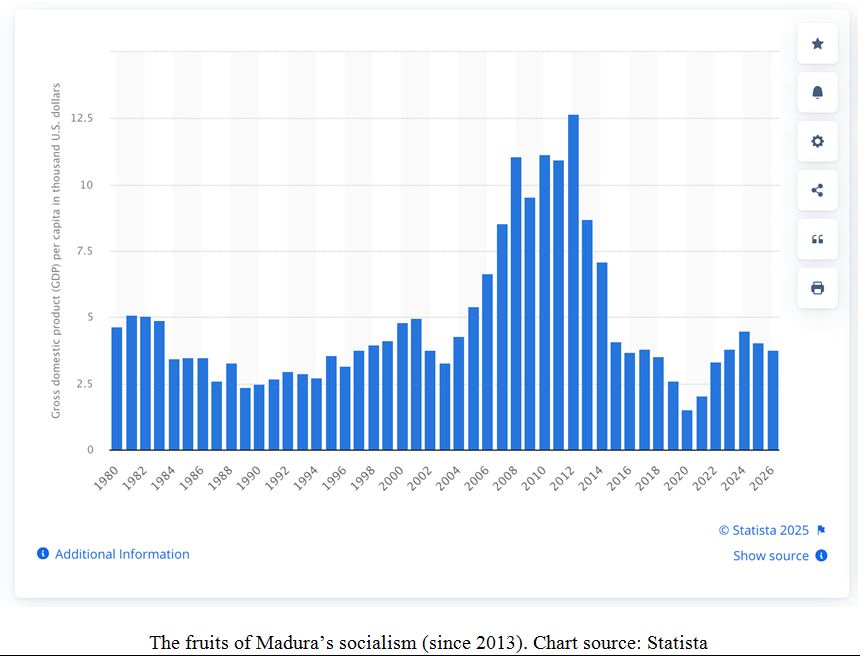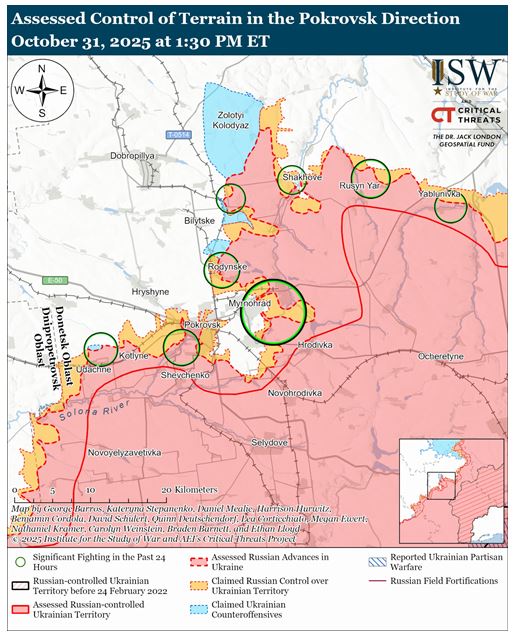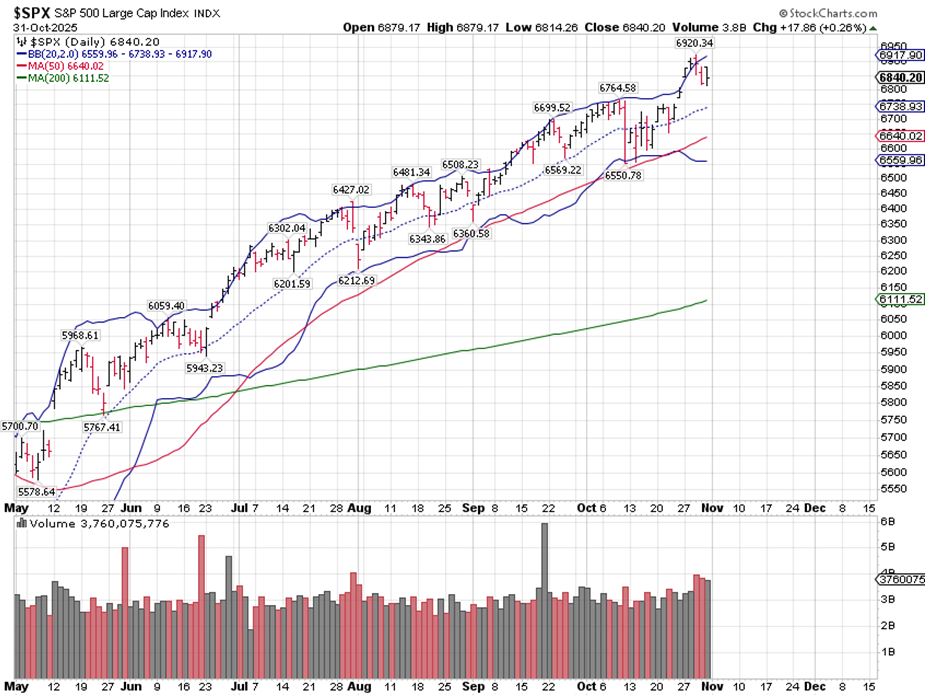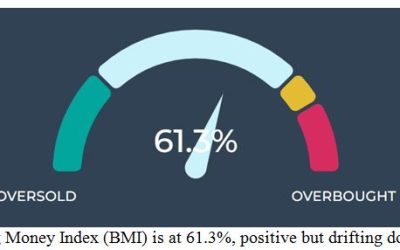by Ivan Martchev
November 4, 2025
The Wall Street Journal ran a story last Thursday entitled, “U.S. Eyes Striking Venezuelan Military Targets Used for Drug Trafficking,” implying that such strikes against that country are imminent.
My first reaction was that the Trump administration’s strategy of testing the military option against drug cartels in Venezuela is more practical than trying the same strategy against Mexico, which is a far bigger problem when it comes to drug trafficking. The Trump team may also be trying to kill two birds with one stone – toppling President Nicolas Maduro, whose socialist policies have run that country into the ground.
Venezuela’s GDP grew rapidly before 2012, then it fell sharply after Maduro took power in 2013:
Graphs are for illustrative and discussion purposes only. Please read important disclosures at the end of this commentary.
It’s also possible that the U.S. is testing its military strategy against drug cartels as far from home as possible, as doing so in Mexico would not be palatable to tens of millions of Americans of Mexican ancestry. And, unlike Mexico, Venezuela is an economic disaster, with GDP per capita declining by 70% from its 2012 peak – the equivalent of an economic depression under President Nicolas Maduro.
I can’t see how prolonged military confrontation is bullish for the U.S. stock market or bearish for the price of oil, but it is impossible to estimate ahead of time how long it may last. It is safe to say, though, that the situation is escalating rapidly. That’s on top of the Ukraine War, which has also escalated lately.
The Ukraine War Has Been Rapidly Escalating
In October, the Ukraine war devolved from a now-postponed Trump-Putin peace summit in Budapest to a rapid escalation of hostilities on the ground – all in a mere two weeks. This map, from a U.S. source via ChatGPT’s Atlas, its new and fairly awesome browser, shows a continued encirclement of Pokrovsk, which the Russians view as the key city to their complete takeover of Donbass – the southeastern Ukraine region of mostly Russian speakers – as it is a key railway and highway logistics hub for supplying Ukraine’s frontline. There are reports of huge Russian troop numbers (c. 170,000) surrounding the city.
I think we are about to test the theory that, “If Pokrovsk falls, the Ukrainian frontline collapses,” as the Ukrainians are outmanned, outgunned and almost completely encircled. The Russian demands, as reported by the Western media, center around the idea of Ukraine giving up the Donbass and Crimea, with Ukraine demilitarizing and agreeing to never join NATO.
Even if Ukraine does not agree to these Russian demands, and all of Donbass falls and the fighting stops along that frontline, Ukraine cannot join NATO in the middle of a military conflict.
Here is how ChatGPT answered a question about the rules of NATO membership during a war:
1. NATO’s rules
NATO’s founding document, the Washington Treaty (1949), doesn’t explicitly forbid admitting a country that’s at war — but in practice, Article 5 (the collective defense clause) makes it nearly impossible.
If NATO admitted a country currently fighting, the alliance would immediately be obliged to consider that war its own, potentially dragging all 31 members into an active conflict. No existing members would agree to that.
2. Membership process
Joining NATO requires:
- Unanimous approval by all members.
- Ratification by each member’s parliament.
- Fulfillment of military and political criteria (stable institutions, civilian control of the military, ability to contribute to NATO defense).
- That process takes months to years — impossible during an ongoing war.
3. Precedents
- Ukraine (2022–present) applied for NATO membership during the Russian invasion, but NATO made clear that it cannot be admitted while hostilities continue.
- Similar logic applied to Bosnia and Herzegovina in the 1990s — discussions waited until after peace agreements.
4. What can happen instead
NATO can (and does) give strong support short of membership:
- Training, weapons, intelligence, and coordination (as with Ukraine).
- Security guarantees, or “NATO-aspirant” status.
So, what does all this mean for the stock market? This month, the U.S. might bomb Venezuela, and the Russians might take a key Ukrainian city. If one or both of those events happens, I expect a pullback in U.S. stocks. When the stock market surges rapidly, the way it did in the last 10 days of October, then it tends to consolidate those gains by going sideways for a while. Some call this action backing and filling.
Graphs are for illustrative and discussion purposes only. Please read important disclosures at the end of this commentary.
Before the 100% China tariff threat on October 10th, we had only three closes below the 20-day moving average (the middle, dotted line) on the S&P 500 since late April. After the 100% tariff threat, we got five closes below the 20-day MA in a row. Clearly, investors got spooked. With the trade war now on the back burner and the situation being smoothed over with China (for now), we’ve seen an aggressive rebound.
My base-case target for the downside in the S&P 500 for the coming consolidation is 6,700 on the cash market – a level where we stood just a couple of weeks ago. If this is just a small correction, the S&P 500 should not spend any meaningful time below its 50-day moving average, which today stands at 6,640.
The S&P 500 has not dipped below its 50-day moving average since late April. At some point, we will get a deeper correction, but if the geopolitical situation does not spiral out of control and the correction is relatively short-lived, then a deeper correction may have to wait till next year.
It still looks like we will trade above 7,000 on the S&P 500 by year-end, as this is the seasonally strongest time of the year, but in the next two weeks or so, some sideways action is more likely.
The post 11-4-25: Geopolitics are About to Come to the Fore in the Next Two Weeks appeared first on Navellier.









